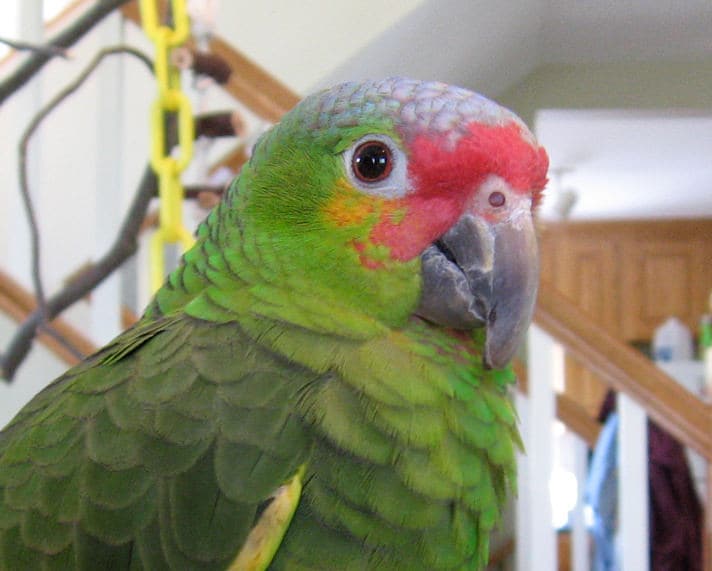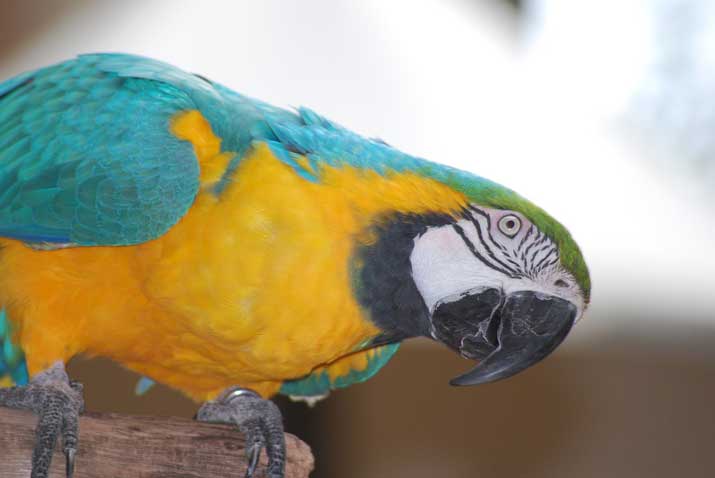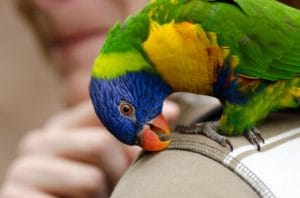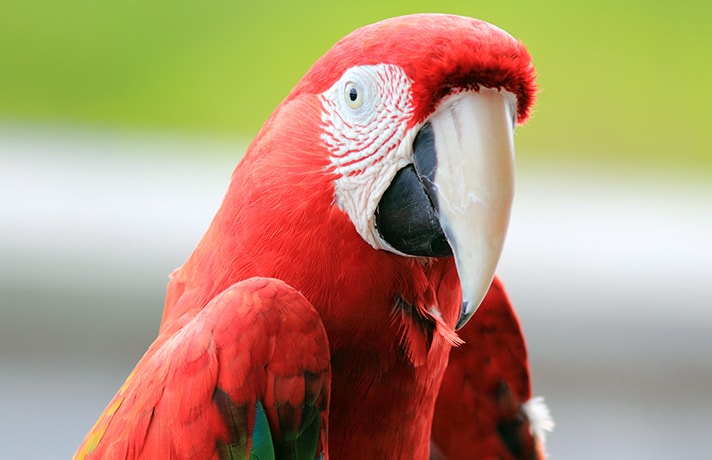The Appeal Of The Cockatiel
Cockatiel parrots are known for their powerful, smooth whistle. They are creative songsters that love to sing and whistle and show off.
Royce Irwin of Texas has been breeding and showing most types of cockatiels since 1983. He is also a member of the North Texas Cockatiel Club, which began in the mid-1980s to fill the need for cockatiel shows in north Texas and Oklahoma.
“Cockatiels will do several different kinds of whistles. They seem to really like the wolf calls but will whistle anything if they hear it enough.” Irwin added that cockatiels are likely to teach their whistles and songs to other birds. According to Irwin, his male cockatiel has the stronger vocal ability, but a small percentage of females are also able to whistle.
“Cockatiels are very sweet and charming little guys,” said Lisa Alexis of Louisiana. She has a 2-year-old male whitefaced-cinnamon mutation cockatiel, Snoopy, that loves to sing. “He’s my little friend with a big voice. When he was just a baby, on his way home in the car, my dad looked at him and started to whistle. Snoopy came out of his traveling cage and whistled back. That is how all this started. He can whistle up a storm. He loves to look in the mirror and whistle at that pretty birdie reflection of his. He will do this for hours each day.”
“I believe that cockatiels are the best whistlers/singers,” said Becky Denney of Ontario, Canada. She has a whitefaced-pied mutation cockatiel named Sydney. “He knows several different whistles, which I taught him to do as I conduct him with my finger. Every time I bring him to work at Super Pet in Belleville, he amazes people with his ability to perform. He’s a great bird, and I wouldn’t give him up for the world.”
The Great Singing Parrot: The Amazon
Amazon parrots have a long and storied history as song masters, in part because of their colorful personalities.
Diana Holloway, former president of The Amazona Society, said that Amazons enjoy showing off their talents and like to be the center of attention. “You usually see yellow-naped Amazons on TV singing. The audience always laughs, not just because of the talent, but also because of the bird itself. Amazons puff out their cheek feathers and sway, prance and head bob while showing off. They are true hams.” Her Amazon, Lola, loves to sing Barry Manilow’s “Cabana Song.” “She gets into singing, ‘Her name was Lola, she was a showgirl at the Copa, Copa Cabana’ at the top of her lungs, and then makes the song her own by interjecting all kinds of other phrases and operatic arias. It is hysterical.” She added that double-yellow-headed Amazons are known for their operatic voices. “They can run the scales like no other parrot.”
Susanne Cochran of Colorado raises Amazons at the Avalon Aviary and believes that in addition to the double yellow-headed Amazon, the yellow-naped and blue-fronted Amazons are the best singers. “They love to be vocal; it is part of being a magnificent Amazon, and they know they are magnificent.” Cochran said that these parrots like to make up new songs that show off their creativity. “I think it is done more when they forget a part of a song or are at a loss for words.” Although Amazons are enthusiastic singers and can be quite loud, they can be taught to “whisper sing,” Cochran related. Her yellow-naped mother bird, Wolfie, sings soft “la-la-las” to her babies in the nest.
Yvonne Kleine of New York has a yellow-naped Amazon, Perri, that greets her with a series of wolf whistles, jungle songs of her own composition and the occasional Amazonian Concerto. “We have this little ritual where she sings to me, and after a few bars, she stops, and I am supposed to fill in the missing musical parts. If she likes the melody, she joins in, if she doesn’t, she screeches “No! No! No!” and we start all over again. She never gets tired of doing this.” Perri also sings opera. She loves Gilbert and Sullivan. “She sings and dances to ‘We Sail the Ocean Blue,’ wiggling around and bobbing her head while fluttering her wings. Her version is so funny and fractured that there have been times I have laughed until tears flowed.”
Diana Craven of California has three African greys, but her best talker (and songstress) is her yellow-crowned Amazon, Little Lulu. “She learned to turn on the radio by watching me move the switch from radio to tape. Now she moves the switch back to radio, says ‘Good girl’ and returns to her cage.” Little Lulu sings ‘Take Me Out to the Ballgame,’ which is very clear, all the way to ‘I don’t care if never get back.’ She loves to sing ‘crackerjack.’ She also sings ‘I Left My Heart in San Francisco,’ through to ‘the morning sun will chill the air.’ I think she misses a few words somewhere, but there’s no mistaking what she is singing. She sings herself to sleep very softly, making up her own words and melody, and sometimes she just hums.”
The Beautiful Song of the Canary
The songs of canaries have inspired people for centuries. But none are more beautiful than the song canaries, which are bred specifically for their vocal abilities. Although the songs of all canaries are pleasant, each is distinct. The German roller has a soft tone, whereas the Spanish timbrado has a metallic sound that can be rather loud. The American singer, developed by breeding a roller canary to a border canary, is somewhere in the middle, with a melodic blend and a medium sound, and the Belgian waterslager is capable of singing unique watery notes.
“All male canaries sing,” said Vanessa Johnson of the Texas American Singer Canary Club. “The only true test for a male is to hear him sing loud and clear. Only male birds engage in full song, but occasionally a female may have a few warbling notes. “American singers are bred for song alone. There is no exact sound for the American singer canary. The definition of “song” in the National American Singer Constitution is: A musical sequence of notes and tours naturally given, not too loud or too soft, medium, pleasing to the average human ear; varied, full songs, no repetition of short tours or notes becoming monotonous.”
Kathy Guise Schaefer of the Kings County Canary Club in New York has been raising and breeding canaries since 1974. “As far as I’m concerned, the red factor [canary] has the best sound, because they’re closer to the wild. They still have some kick. They’re loud but with a pretty sound.” She added, “All canaries will pick up songs from wherever they hear them.”
Cathy Osier of New Jersey has cockatiels, parakeets, a caique, a Senegal and a canary. She said, hands down, the canary is the best singer and whistler. “My canary, Whistler, sings a wonderful tune, which he has expanded since I purchased a CD of canary songs. He is quickly adding the songs to his repertoire. When we first saw Whistler, he was in a cage with about 10 other canaries, he was the only one singing. He came home to us singing in his little travel box and continues to delight us with his song every day. Whistler puffs up, filling up with air and, like an opera singer, sings his aria as he slowly deflates. We all, including the other birds in our household, enjoy listening to his songs. His biggest fans are the parakeets ?they love him, and he loves them.”
Posted By: Chewy Editorial
Featured Image: Via Richard/Flickr
Share:









